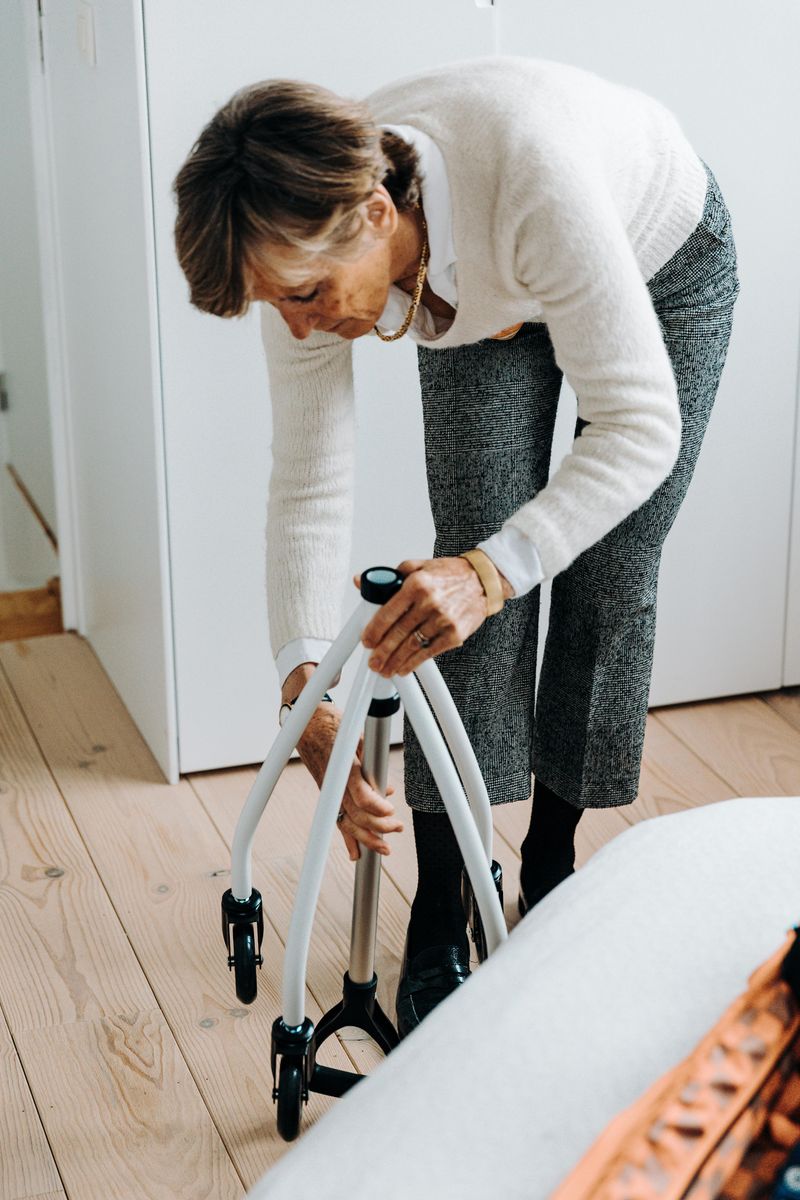What to Reassess in Your Routine Beyond the Age of 70

Getting older doesn’t mean slowing down – it means making smarter choices about how you spend your time and energy. After 70, your body and lifestyle have changed in ways that might require adjusting habits you’ve had for decades. Taking a fresh look at your daily routines can help you stay independent, healthy, and happy for years to come.
1. Healthcare Check-up Schedule

Those annual head-to-toe exams might need rethinking. Some screenings become less beneficial after 70, while others deserve more attention. Balance tests and vision checks should move up your priority list as they directly impact your safety.
Talk with your doctor about personalizing your healthcare calendar. Maybe quarterly check-ins with your primary physician make more sense than waiting for yearly visits. Dental care remains crucial too, as oral health connects to heart disease and other conditions.
Consider adding a geriatric specialist to your healthcare team who understands the unique needs of aging bodies. They can coordinate between specialists and help you avoid unnecessary tests or treatments.
2. Movement and Strength Building

Remember when you could sprint up stairs without a second thought? Your body’s changing needs call for exercise adjustments – not elimination. Water-based workouts offer joint relief while maintaining cardiovascular benefits. Chair yoga builds flexibility without straining balance.
Strength training becomes more vital than ever, even with lighter weights or resistance bands. Just twice weekly sessions help preserve muscle mass that naturally declines with age. The goal shifts from personal records to functional fitness that supports everyday activities.
Morning exercises might work better than evening workouts as energy levels tend to peak earlier in the day. Listen to your body’s signals rather than pushing through discomfort that might indicate potential injury.
3. Behind the Wheel Practices

Freedom often feels connected to driving, but safety matters most. Night vision changes might make evening outings more challenging – consider scheduling activities during daylight hours instead. Refresher driving courses designed specifically for older adults can sharpen skills and possibly lower insurance rates.
Technology offers helpful additions to your vehicle. Backup cameras, blind-spot monitors, and navigation systems compensate for physical changes. Planning routes to avoid left turns across traffic reduces accident risk significantly.
Be honest about when driving no longer feels comfortable. Rideshare services, community transportation programs, and family support provide alternatives that maintain independence without compromising safety. Having transportation options ready before you need them ensures smoother transitions.
4. Rest and Recovery Patterns

Sleep architecture transforms with age – your body might prefer different bedtimes and wake-up calls now. Experiment with earlier evenings if you find yourself naturally waking before dawn. Creating a bedroom sanctuary becomes increasingly important when sleep grows more fragile.
Afternoon rest periods aren’t signs of weakness but strategic energy management. A 20-minute power nap can restore alertness without disrupting nighttime sleep. Tracking your sleep patterns with a simple journal helps identify which habits support your best rest.
Evening routines deserve special attention. Reducing screen time, limiting fluids after dinner, and gentle stretching can dramatically improve sleep quality. Consider temperature adjustments too – many older adults sleep better in slightly cooler rooms than they did in their younger years.
5. Medication Management System

Brown bag it! Gathering all your medications – prescription, over-the-counter, and supplements – in one bag for a comprehensive pharmacist review can reveal surprising interactions. As metabolism changes with age, medications may affect you differently than they once did.
Organization tools range from simple pill sorters to sophisticated electronic dispensers with alarms. Find what matches your lifestyle and cognitive comfort. Maintaining an updated medication list on your phone or wallet provides crucial information during emergencies.
Question additions carefully. With each new prescription, ask if it might replace rather than add to your current regimen. Sometimes symptoms attributed to new conditions actually stem from medication side effects. Partnership with healthcare providers ensures your medication plan remains appropriate for your changing body.
6. Nutrition and Hydration Approach

Appetite changes are normal, but nutrition remains essential. Smaller, more frequent meals often work better than three large ones when hunger signals grow quieter. Protein needs actually increase with age to preserve muscle mass – think eggs at breakfast, beans at lunch, and fish for dinner.
Hydration deserves deliberate attention since thirst perception diminishes over time. Keeping water visible in clear containers throughout your home serves as a visual reminder to sip regularly. Flavor-infused options might increase appeal if plain water seems unappetizing.
Meal preparation challenges call for creative solutions rather than relying on processed alternatives. Community meal services, grocery delivery, or cooking with friends transforms nutrition from a chore to a social activity. Specialized utensils and kitchen tools can compensate for grip strength changes.
7. Social Connection Priorities

Quality trumps quantity when energy becomes a precious resource. Take inventory of which gatherings leave you feeling energized versus depleted. Sometimes the most rewarding connections happen in smaller, quieter settings rather than large events with overwhelming sensory input.
Technology bridges gaps when physical gatherings prove challenging. Video calls with faraway family members or online communities centered around lifelong interests provide meaningful interaction without transportation concerns. Learning simple tech skills opens social doors previously unavailable to earlier generations.
Intergenerational connections offer special value. Relationships with younger people provide fresh perspectives and purpose. Consider volunteering opportunities that match your experience with community needs. Teaching skills you’ve mastered over decades creates legacy while fostering new friendships.
8. Financial Paperwork Simplification

Financial clutter creates unnecessary stress at any age. Consolidating accounts reduces paperwork and simplifies money management – consider whether multiple bank accounts or investment platforms still serve your needs. Automatic bill payments prevent missed deadlines if memory occasionally falters.
Insurance needs evolve dramatically after 70. Review policies to ensure you’re not paying for coverage that’s no longer relevant while confirming adequate protection in areas that matter most now. Long-term care considerations deserve thoughtful planning rather than avoidance.
Legacy documents require regular updates. Beyond wills and trusts, consider creating an ethical will that shares values and wisdom alongside material assets. Digital password management becomes increasingly important as online accounts multiply. Sharing your organizational system with trusted family members prevents confusion during emergencies.
9. Home Safety and Maintenance

Fall prevention starts with honest assessment. Rugs that once added character now create tripping hazards. Strategic grab bars installed before they’re needed prevent bathroom accidents. Improved lighting, particularly on staircases and in hallways, reduces risk dramatically.
Seasonal home maintenance tasks require reconsideration. Ladder work, gutter cleaning, and heavy lifting present unnecessary dangers. Building relationships with reliable service providers before emergencies occur ensures help when needed. Many communities offer senior discount programs for essential home services.
Room-by-room evaluation reveals simple modifications with significant impact. Rearranging furniture to create clear pathways, raising electrical outlets, and lowering storage to accessible heights improves daily function. Smart home technology like voice-activated lighting and video doorbells adds convenience and security without complicated installation.
10. Digital Tools and Screen Time

Technology offers remarkable benefits when selected thoughtfully. Medical alert systems provide security without sacrificing independence. Grocery delivery apps eliminate heavy lifting while ensuring pantry essentials remain stocked. Voice-activated assistants simplify everyday tasks from setting timers to checking weather forecasts.
Screen time deserves boundaries just as it does for younger generations. Blue light from devices can disrupt sleep patterns already changing with age. Setting specific tech-free times, particularly before bedtime, improves rest quality.
Learning curves feel steeper but remain conquerable. Local library classes often provide senior-specific technology training in supportive environments. Focus on mastering tools with practical applications rather than feeling pressured to adopt every new platform. Patience with the learning process yields digital confidence that connects rather than isolates.

Comments
Loading…